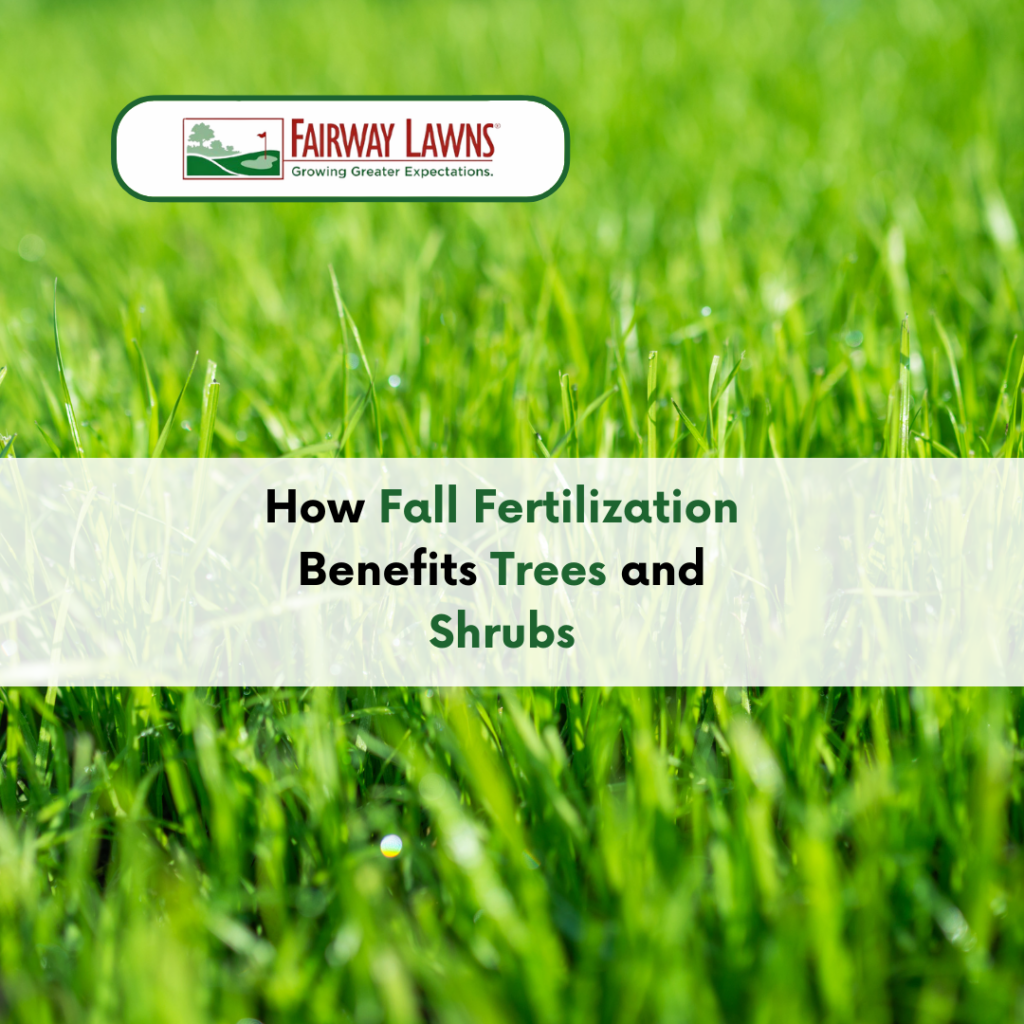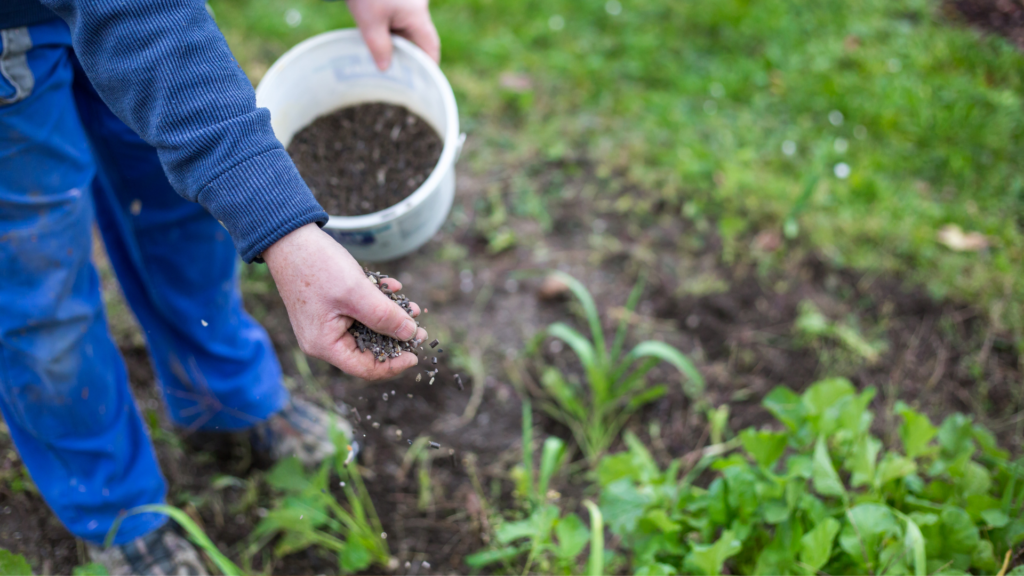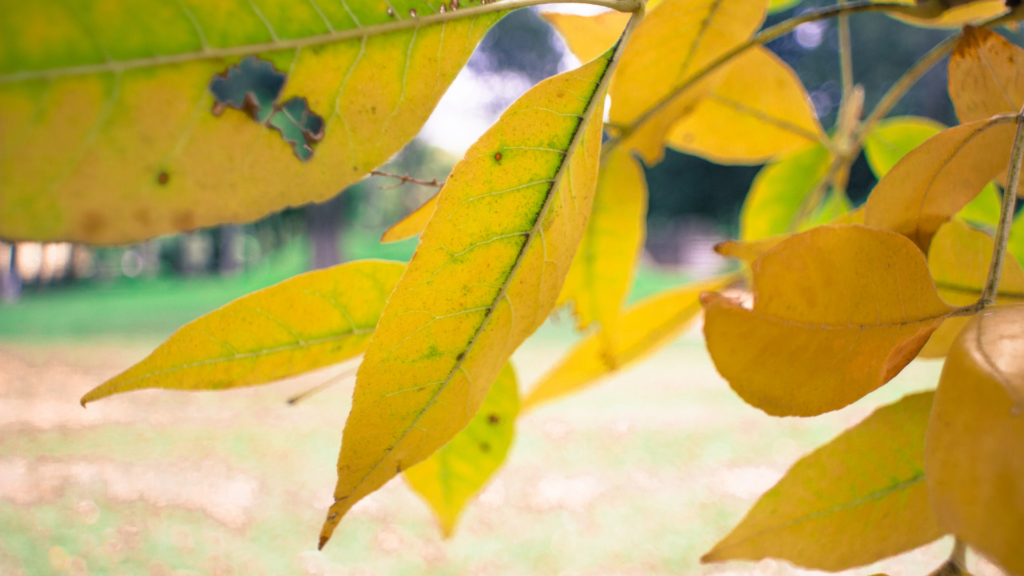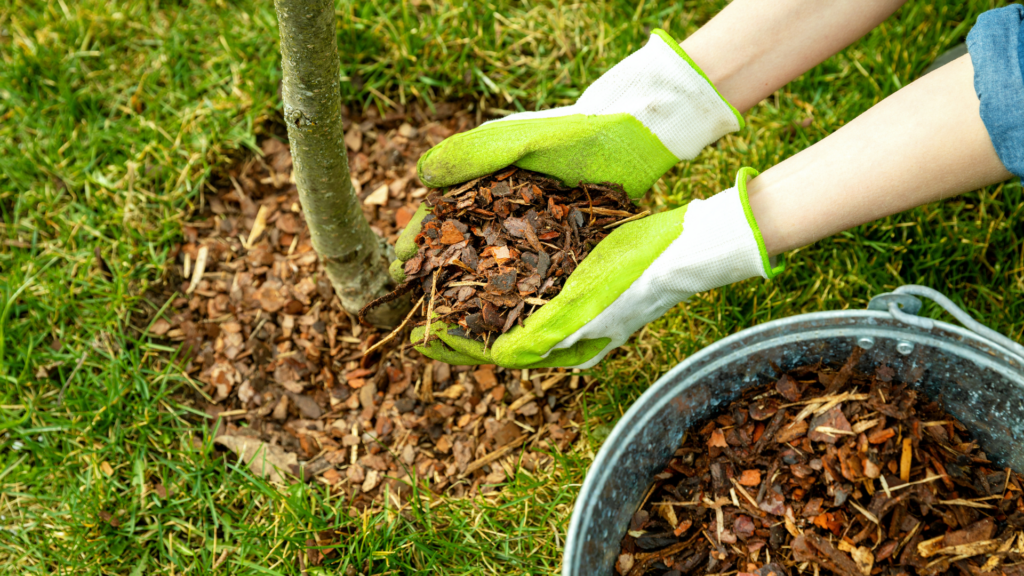
How Fall Fertilization Benefits Trees and Shrubs
Fall is an important season for your trees and shrubs. As the summer heat fades, it's the perfect time to give them a nutrient boost through fertilization. Fall fertilization helps trees and shrubs store energy for the winter and promotes better growth in the spring. Understanding why this is vital can make a big difference in the health and beauty of your landscape.
During the fall, trees and shrubs enter a phase where they start preparing for the colder months. Their roots continue to grow even as the above-ground parts slow down. This is why fertilizing in the fall is so beneficial. It ensures that your plants get the nutrients they need when they need them most.
Applying the right fertilizer in the fall supports strong root growth, improves resistance to winter stress, and helps maintain vibrant foliage. With proper care, your trees and shrubs can thrive and become more resilient. This article will break down the key benefits of fall fertilization and how you can easily apply it to your garden.
What Is Fall Fertilization?
Fall fertilization involves applying nutrient-rich fertilizers to trees and shrubs during the autumn season. This period, typically between late September and early November, is crucial for plant health. While trees and shrubs appear to slow down above ground, their roots continue to grow and store nutrients for the upcoming winter months.
This process ensures that plants receive essential nutrients when they're most needed. Fall fertilization helps prepare trees and shrubs for the stresses of winter, promoting strong root development and healthy growth in the spring. The nutrients applied in the fall are gradually absorbed and utilized throughout the dormant season, providing a steady supply of nourishment.
Unlike spring fertilization, which focuses on boosting rapid growth, fall fertilization is more about long-term health. It's an investment in your landscape's future, ensuring that trees and shrubs develop robust root systems and are better equipped to handle environmental stress.

How Fertilization Benefits Trees and Shrubs
Fertilizing trees and shrubs in the fall offers several significant benefits that contribute to their overall health and vitality. Here are a few key benefits:
1. Enhanced Root Development: Fall fertilization promotes healthier root systems, helping trees and shrubs absorb nutrients and water more efficiently.
2. Improved Disease Resistance: Well-nourished plants are better equipped to fend off diseases and pests. The nutrients provided by fall fertilization strengthen plant immune systems.
3. Better Winter Hardiness: Fall fertilization helps plants store energy, making them more resilient to winter's cold temperatures and harsh conditions.
4. Vibrant Spring Growth: By providing essential nutrients in the fall, you set the stage for lush, vibrant growth when spring arrives. Your trees and shrubs will have the resources they need to flourish.
5. Balanced Nutrition: Fall fertilization ensures that trees and shrubs receive a balanced mix of nutrients, which is essential for overall health and growth.
These benefits make fall fertilization a critical component of tree and shrub care, fostering healthier, more resilient plants.
Key Nutrients Needed for Healthy Trees and Shrubs
For trees and shrubs to thrive, they need a variety of nutrients that support different aspects of their growth. Here's a breakdown of the key nutrients:
1. Nitrogen (N): This nutrient is crucial for leaf and stem growth. It gives plants their green color and is vital for photosynthesis.
2. Phosphorus (P): Phosphorus supports the development of roots, flowers, and fruit. It also plays a role in energy transfer within the plant.
3. Potassium (K): Potassium helps regulate water uptake and is key for overall plant health. It improves disease resistance and enhances drought tolerance.
4. Calcium (Ca): Calcium is important for cell wall structure and helps with nutrient transport within the plant.
5. Magnesium (Mg): Magnesium is a central component of chlorophyll, the molecule responsible for capturing light energy in photosynthesis.
6. Iron (Fe): Essential for chlorophyll production, iron helps prevent yellowing of leaves.
A balanced fertilizer will contain these nutrients in appropriate ratios. Reading the fertilizer label can help you choose the right product for your specific trees and shrubs, ensuring they get a well-rounded supply of nutrients.
The Role of Fall Fertilization in Root Growth
Fall fertilization plays a vital role in promoting root growth. During the fall, trees and shrubs focus their energy on developing their root systems rather than growing new leaves or branches. This shift in energy allocation makes fall the perfect time to support root development.
1. Nutrient Uptake: Fall fertilization provides essential nutrients that are readily absorbed by the roots. These nutrients are stored and used throughout the winter, aiding in root growth and overall plant health.
2. Energy Storage: Trees and shrubs store energy in their roots during the fall. This stored energy supports new growth in the spring, helping plants emerge stronger and more vigorous.
3. Root Expansion: The cooler temperatures and increased soil moisture during the fall create optimal conditions for root expansion. Fertilizing during this time encourages roots to grow deeper and spread wider, improving the plant's ability to access water and nutrients.
By focusing on root growth, fall fertilization ensures that your trees and shrubs have a strong foundation to support healthy growth in the spring and beyond.
Signs Your Trees and Shrubs Need Fertilization
Identifying when your trees and shrubs need fertilization is essential for maintaining their health. Here are some signs to look for:
1. Stunted Growth: If your trees and shrubs are growing more slowly than usual, they may lack essential nutrients.

2. Yellowing Leaves: Leaves turning yellow or light green may indicate a nutrient deficiency, particularly nitrogen.
3. Poor Flower Development: If your shrubs and trees produce fewer flowers or fruit, they might need fertilization to support their reproductive processes.
4. Premature Leaf Drop: Seeing leaves fall earlier than usual can be a sign that your plants are stressed and need a nutrient boost.
5. Sparse or Thin Foliage: Thin or sparse foliage on your shrubs and trees often signals that they need more nutrients to support fuller leaf growth.
By recognizing these signs, you can plan timely fertilization to restore the health and vitality of your plants.
Best Time for Fall Fertilization
Timing is crucial for effective fall fertilization. Applying fertilizer at the right time ensures that your trees and shrubs can fully benefit. Here's the best timing guide:
1. When to Start: Begin fall fertilization in late September through early November. This period allows plants to absorb nutrients before they go dormant for the winter.
2. Ideal Conditions: Fertilize when the soil is still warm but the air temperature has started to cool. This range typically falls between 40°F and 60°F.
3. Soil Moisture: Make sure the soil is moist before applying fertilizer. Water your garden a day or two before fertilizing if it hasn't rained.
4. Avoid Frosty Days: Don't apply fertilizer immediately before a frost. Ensure there is adequate time for nutrients to be absorbed by the roots.
By following these timing guidelines, you can maximize the benefits of fall fertilization, setting up your trees and shrubs for a robust spring.
Step-by-Step Guide to Applying Fall Fertilizer
Applying fall fertilizer is straightforward if you follow these steps:
1. Test Your Soil: Before you start, test your soil to understand its nutrient needs. This will help you choose the right fertilizer.
2. Choose the Right Fertilizer: Based on your soil test, select a balanced fertilizer with the necessary nutrients for your trees and shrubs.
3. Clear the Area: Remove any fallen leaves or debris from around your trees and shrubs to ensure the fertilizer reaches the soil.
4. Apply Fertilizer: Spread the fertilizer evenly around the base of your trees and shrubs, keeping a few inches away from the trunk to avoid burning the roots.
5. Water Thoroughly: After applying the fertilizer, water the area well. This helps the nutrients penetrate into the root zone.
6. Monitor and Adjust: Keep an eye on your plants over the following weeks and adjust your care routine as needed.
By following these steps, you ensure that your trees and shrubs receive the nutrients they need to thrive.
How to Choose the Right Fertilizer
Choosing the right fertilizer is key to successful fall fertilization. Here's what to look for:
1. Balanced Fertilizers: Look for fertilizers labeled as "balanced," meaning they contain equal or similar proportions of nitrogen (N), phosphorus (P), and potassium (K). For example, a 10-10-10 formula.
2. Slow-Release Options: Slow-release fertilizers deliver nutrients over time, reducing the risk of over-fertilization and ensuring steady nutrient supply during the dormant season.
3. Organic vs. Synthetic: Decide between organic and synthetic fertilizers. Organic options like compost or well-rotted manure provide nutrients naturally and improve soil health. Synthetic fertilizers offer more precise nutrient ratios and faster results.
4. Read Labels Carefully: Always read the labels to understand the nutrient content and application instructions. Make sure the fertilizer suits the specific needs of your trees and shrubs.
5. Consult Professionals: If in doubt, consult a professional or your local extension service for advice tailored to your specific plants and soil conditions.
Choosing the right fertilizer sets the stage for a successful fall fertilization, helping your trees and shrubs grow strong and healthy.
Common Fertilization Mistakes to Avoid
Fertilizing trees and shrubs properly can make all the difference. However, avoid these common mistakes to ensure the best results:
1. Over-Fertilization: Applying too much fertilizer can harm plants. It can lead to excessive growth, which stresses the plants and makes them more susceptible to disease and pests.
2. Improper Timing: Fertilizing at the wrong time of year won't give your plants the boost they need. Fall is ideal because it supports root growth without pushing new top growth that can be damaged by winter cold.
3. Wrong Fertilizer Type: Using the incorrect type of fertilizer can either underfeed or overfeed your plants. Make sure to choose a balanced formula designed for trees and shrubs.
4. Neglecting Soil Health: Fertilizer isn't a cure-all. If your soil is compacted or poor in organic matter, plants won't benefit as much. Remember to maintain good soil health for better fertilization results.
Avoiding these mistakes will help you fertilize effectively and keep your trees and shrubs healthy.
Benefits of Using Liquid Fertilizers
Liquid fertilizers offer several advantages for feeding your trees and shrubs effectively:
- Quick Absorption: Liquid fertilizers are absorbed faster by plants. This means they can get necessary nutrients more quickly, showing positive effects sooner.
- Even Distribution: Liquid formulas are easier to spread evenly around the plant's root zone. This ensures that all parts of the plant get the nutrients they need.
- Easy Application: Liquid fertilizers can be applied with a simple garden sprayer or hose-end sprayer. This makes the process quicker and less labor-intensive.
- Versatility: They can often be used for foliar feeding, which allows plants to absorb nutrients through their leaves in addition to their roots.
Switching to liquid fertilizers can provide your trees and shrubs with the nutrients they need, promoting healthier and more vigorous growth.
Post-Fertilization Care Tips
Once you've fertilized your trees and shrubs, proper care ensures they make the most of it:
- Watering: After fertilization, water your plants thoroughly. This helps the fertilizer penetrate the soil and reach the roots better.

- Mulching: Apply a layer of mulch around the base of trees and shrubs. Mulch helps retain moisture and keeps the soil temperature stable, benefiting root health.
- Regular Inspections: Keep an eye on your plants over the weeks following fertilization. Look for signs of improvement like new growth and vibrant color. If you see any issues, such as yellowing leaves, it might be a sign of over-fertilization or other stress.
Following these post-fertilization care tips will help maximize the benefits and keep your plants thriving.
Debunking Myths About Tree and Shrub Fertilization
There are several myths about tree and shrub fertilization. Let's clear up some of the most common ones:
- Myth 1: Fertilization Is Only Necessary in Spring: While spring fertilization is beneficial, fall fertilization is crucial for root development and preparing plants for the winter.
- Myth 2: More Fertilizer Means Better Growth: Over-fertilization can do more harm than good. It's better to follow recommended guidelines for the specific needs of your plants.
- Myth 3: All Fertilizers Are the Same: Different plants have different nutrient needs. Using a fertilizer specially formulated for trees and shrubs ensures they get the proper nutrients.
Understanding these myths helps you make informed decisions about fertilizing your trees and shrubs effectively.
Conclusion
Fall fertilization is essential for maintaining the health of your trees and shrubs. It supports root growth, improves nutrient uptake, and prepares plants for the challenges of winter. Avoiding common mistakes, choosing the right type of fertilizer, and following up with proper care are key steps to ensure your trees and shrubs thrive.
Ready to give your trees and shrubs the nutrients they need this fall? Contact Fairway Lawns for expert advice and premium fertilization services. Let's work together to create a beautiful, healthy landscape for your home through our tree and shrub care services!